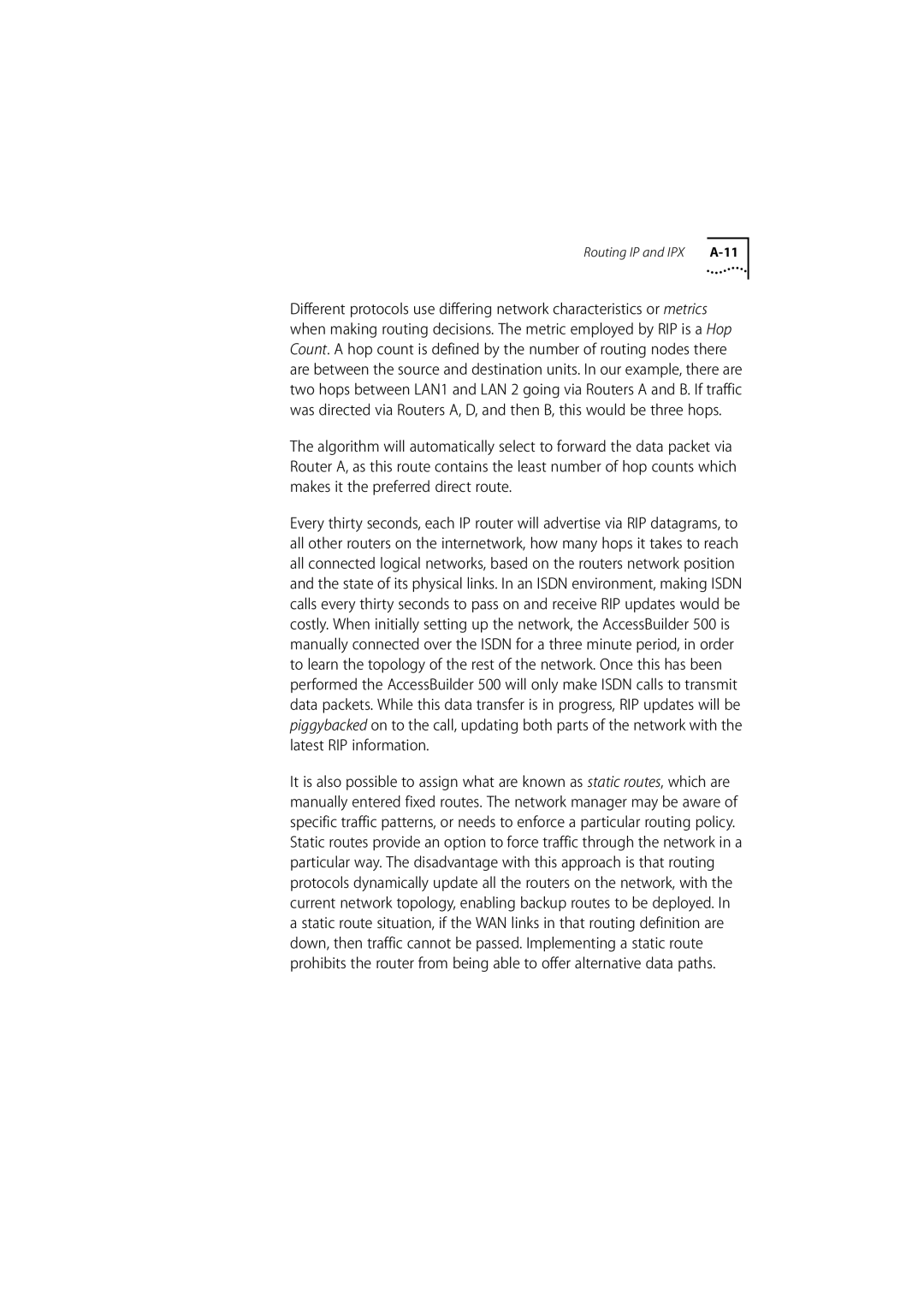Routing IP and IPX |
Different protocols use differing network characteristics or metrics when making routing decisions. The metric employed by RIP is a Hop Count. A hop count is defined by the number of routing nodes there are between the source and destination units. In our example, there are two hops between LAN1 and LAN 2 going via Routers A and B. If traffic was directed via Routers A, D, and then B, this would be three hops.
The algorithm will automatically select to forward the data packet via Router A, as this route contains the least number of hop counts which makes it the preferred direct route.
Every thirty seconds, each IP router will advertise via RIP datagrams, to all other routers on the internetwork, how many hops it takes to reach all connected logical networks, based on the routers network position and the state of its physical links. In an ISDN environment, making ISDN calls every thirty seconds to pass on and receive RIP updates would be costly. When initially setting up the network, the AccessBuilder 500 is manually connected over the ISDN for a three minute period, in order to learn the topology of the rest of the network. Once this has been performed the AccessBuilder 500 will only make ISDN calls to transmit data packets. While this data transfer is in progress, RIP updates will be piggybacked on to the call, updating both parts of the network with the latest RIP information.
It is also possible to assign what are known as static routes, which are manually entered fixed routes. The network manager may be aware of specific traffic patterns, or needs to enforce a particular routing policy. Static routes provide an option to force traffic through the network in a particular way. The disadvantage with this approach is that routing protocols dynamically update all the routers on the network, with the current network topology, enabling backup routes to be deployed. In a static route situation, if the WAN links in that routing definition are down, then traffic cannot be passed. Implementing a static route prohibits the router from being able to offer alternative data paths.
